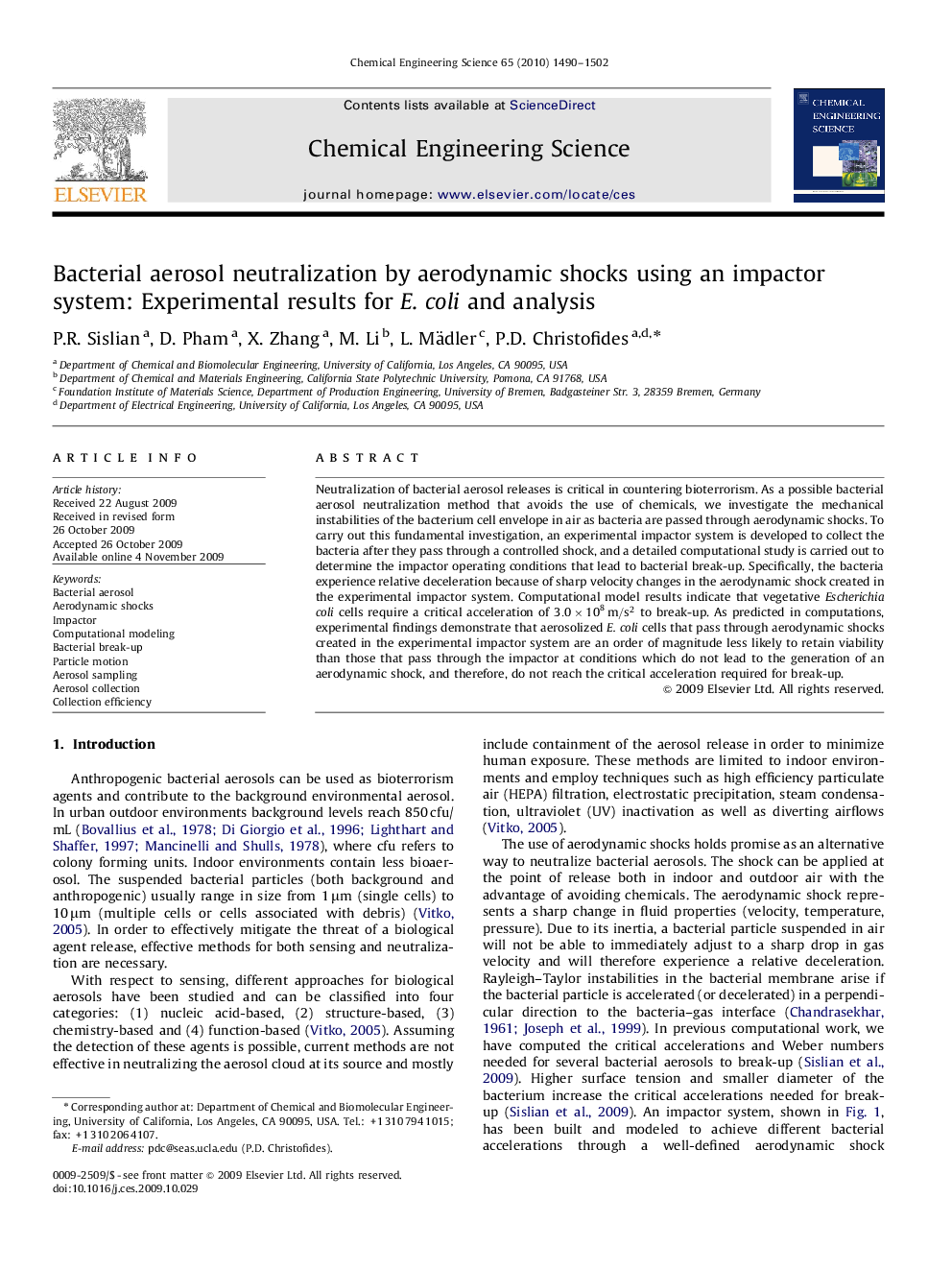| Article ID | Journal | Published Year | Pages | File Type |
|---|---|---|---|---|
| 156625 | Chemical Engineering Science | 2010 | 13 Pages |
Neutralization of bacterial aerosol releases is critical in countering bioterrorism. As a possible bacterial aerosol neutralization method that avoids the use of chemicals, we investigate the mechanical instabilities of the bacterium cell envelope in air as bacteria are passed through aerodynamic shocks. To carry out this fundamental investigation, an experimental impactor system is developed to collect the bacteria after they pass through a controlled shock, and a detailed computational study is carried out to determine the impactor operating conditions that lead to bacterial break-up. Specifically, the bacteria experience relative deceleration because of sharp velocity changes in the aerodynamic shock created in the experimental impactor system. Computational model results indicate that vegetative Escherichia coli cells require a critical acceleration of 3.0×108m/s2 to break-up. As predicted in computations, experimental findings demonstrate that aerosolized E. coli cells that pass through aerodynamic shocks created in the experimental impactor system are an order of magnitude less likely to retain viability than those that pass through the impactor at conditions which do not lead to the generation of an aerodynamic shock, and therefore, do not reach the critical acceleration required for break-up.
